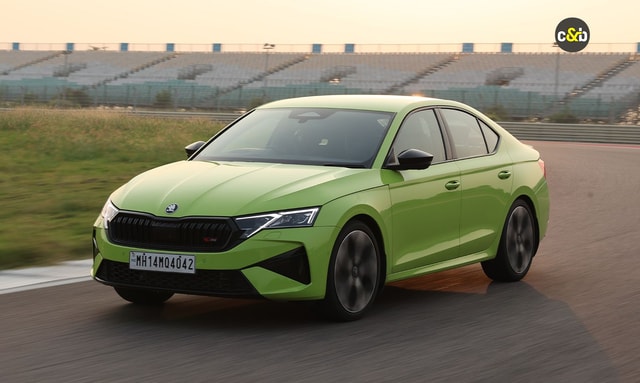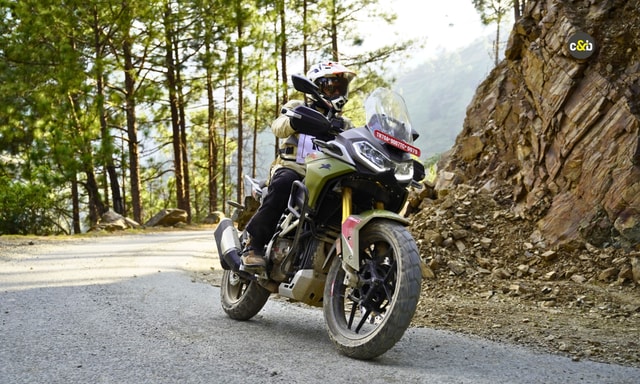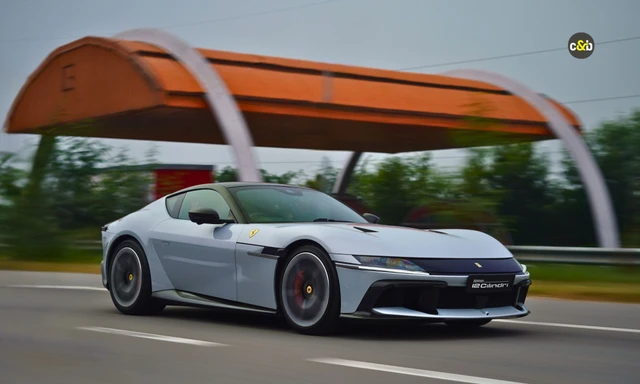Explained: The Functions Of All The Controls On The Modern F1 Steering Wheel

- F1 cars used to have generic steering wheels during the 1950s
- The steering wheels are now more electronic-centric
- The first buttons to be added to the wheel were the paddle shifters
For a conventional driver, all a steering wheel is made for is, as the name suggests, steering the car. However, this is not the same when it's about a Formula One car. In such cars, the steering wheel is used for a lot more things than to sound the horn or change the music for you. In addition to the primary function of changing the direction of the car, it lets you control almost everything there is to the F1 cars.When compared to a normal car's steering wheel, a Formula 1 car steering wheel looks somewhat like a math problem. Not only does it have a HUD display that displays some of the most vital information about the car, but with all those buttons and controls, using one without the right knowledge can be quite frustrating. Whether you are just curious or intrigued, here you will learn all you have to about it.

Why is an F1 steering shaped like that?
To begin with, you must have noticed the rectangular shape of the steering wheel. Well, this is not a gimmicky move. An F1 steering does not rotate any further than three-quarters of each turn; this makes it rather unnecessary to have the round shape. Along with that, there are two slots where the driver hold's the steering, and that's about all.
Buttons in the car
These are all of the buttons found in the latest F1 steering wheels (from left to right):
- Multi-down
- Neutral
- Start
- Differential control
- Fuel hatch
- Engine Stop
- Multi-function button (x2)
- RPM lights
- Start Preparation (x2)
- Speed Limit
- Radio
- Engine
- Screen scroll
- Bi-directional acknowledge

What do the buttons and knobs control?
Now that you have understood the reason for the shape of the steering wheel, it is time to understand the reason for so many knobs, buttons, displays and switches on it. The buttons allow the driver to control everything about the car, starting from brake force distribution to getting their energy drinks squirted in their mouth. A few of the other controls worth mentioning are the brake bias, engine mapping, radio, differential settings, traction control, hand clutch, rain light and a neutral button. The gear shifts, however, are placed behind the wheel, as there is no space in the cockpit.
However, this is and never will be the final layout of the steering wheel since these rules change every year. For instance, traction control, a button that prevents the wheels from spinning, got banned in 2008, and the button was hence removed.
How do the drivers know each control?
It is quite common to get overwhelmed with this for a common driver; however, for an F1 driver, all these controls are absolutely essential. It acts as an interface for the racer and the car, allowing them to make crucial adjustments to ensure a smooth and winning lap.
The drivers are trained for the same and know what each button or knob controls. They might even have to do it at high speeds. The easiest way to do this is to learn the placing of each button and memorize it.
Once they have memorized it and practised with a similar wheel, it is implemented in their muscle memory, and they do not have to search or even think about where the buttons are. They are given the wheels at the beginning of every new year to practice on before the final race.
What mandated such complicated steering wheels?
The Formula One Championship started during the 1950s, but cars back then were more about brute force than electronics. The wheels used to look and function like a normal car. However, during the 60s and 70s, the cockpits of these cars began to shrink. This made it impossible to fit some essential components of the car in the cockpit. This was when things like the shifter and paddle clutch had to be moved to the steering wheel for easier access for the driver.
Some of the very first button placed on the wheel wasthe gear neutral button and then the audio button that allows them to communicate with their team. The latest additions, however, are more electronically binding, namely the ERS, short for Energy Recovery System and the Drag reduction system. There is also an LCD screen that not only shows the vitals of the car and other intricate information but also tells the driver when to shift each gear for the best performance.

Trending News
 1 min read2026 Ducati DesertX V2 Details Revealed
1 min read2026 Ducati DesertX V2 Details Revealed 1 min readEICMA 2025: 2026 Suzuki SV-7GX Unveiled
1 min readEICMA 2025: 2026 Suzuki SV-7GX Unveiled
Latest News
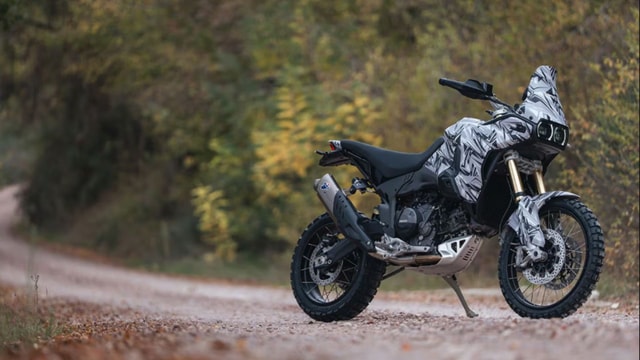 Preetam Bora | Nov 7, 20252026 Ducati DesertX V2 Details RevealedAs the name suggests, the 2026 DesertX V2 will get a new V2 engine, but also get a new frame, as well as styling updates, indicating a complete overhaul.1 min read
Preetam Bora | Nov 7, 20252026 Ducati DesertX V2 Details RevealedAs the name suggests, the 2026 DesertX V2 will get a new V2 engine, but also get a new frame, as well as styling updates, indicating a complete overhaul.1 min read Jafar Rizvi | Nov 7, 2025Aprilia RS 457, Tuono 457 Prices Hiked By Rs 29,000The RS 457 is now priced at Rs 4.50 lakh while the Tuono 457 costs Rs 4.24 lakh (ex-showroom).2 mins read
Jafar Rizvi | Nov 7, 2025Aprilia RS 457, Tuono 457 Prices Hiked By Rs 29,000The RS 457 is now priced at Rs 4.50 lakh while the Tuono 457 costs Rs 4.24 lakh (ex-showroom).2 mins read car&bike Team | Nov 7, 2025EICMA 2025: Aprilia RS 457 GP Replica RevealedAprilia has added a new model to its range of MotoGP-themed two-wheelers, this time based on the brand’s entry-level parallel-twin platform.1 min read
car&bike Team | Nov 7, 2025EICMA 2025: Aprilia RS 457 GP Replica RevealedAprilia has added a new model to its range of MotoGP-themed two-wheelers, this time based on the brand’s entry-level parallel-twin platform.1 min read car&bike Team | Nov 7, 2025New Ducati Multistrada V4 Pikes Peak Launched At Rs 36.17 LakhThe Pikes Peak version of the Multistrada V4 features premium hardware and an upgraded electronic suite.3 mins read
car&bike Team | Nov 7, 2025New Ducati Multistrada V4 Pikes Peak Launched At Rs 36.17 LakhThe Pikes Peak version of the Multistrada V4 features premium hardware and an upgraded electronic suite.3 mins read car&bike Team | Nov 6, 2025EICMA 2025: Honda CB1000GT Sport Tourer RevealedThe CB1000GT is based on the litre-class Hornet, but it features several changes for its sport-touring role.2 mins read
car&bike Team | Nov 6, 2025EICMA 2025: Honda CB1000GT Sport Tourer RevealedThe CB1000GT is based on the litre-class Hornet, but it features several changes for its sport-touring role.2 mins read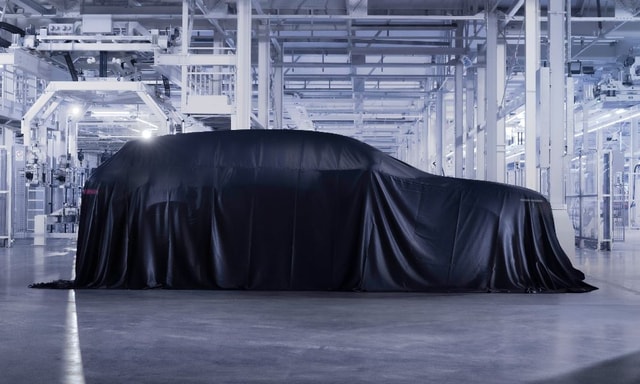 Jaiveer Mehra | Nov 6, 2025Bentley Confirms First EV To Debut In Late 2026; Teases Limited-Run Continental GT SuperSportThe carmaker confirmed that pure internal combustion models would remain part of its line-up in the form of limited-production high-performance models, while plug-in hybrid powertrains would remain on sale atleast till 2035.1 min read
Jaiveer Mehra | Nov 6, 2025Bentley Confirms First EV To Debut In Late 2026; Teases Limited-Run Continental GT SuperSportThe carmaker confirmed that pure internal combustion models would remain part of its line-up in the form of limited-production high-performance models, while plug-in hybrid powertrains would remain on sale atleast till 2035.1 min read



























































































































